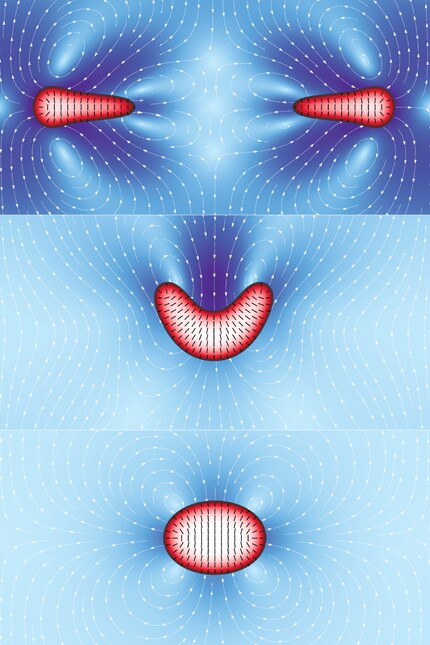Mimicking cell mechanics
DOI: 10.1063/PT.3.2395
A surprisingly broad range of biological systems—from flocks of seagulls down to bacterial colonies and the cytoskeleton (described in Physics Today, February 2010, page 60
In new numerical simulations, Luca Giomi and Antonio DeSimone have shown that a simple two-dimensional system can mimic two fundamental properties of living cells: spontaneous division and motility. They considered a droplet of active material immersed in a normal, Newtonian fluid. The droplet’s rodlike components prefer so-called nematic ordering, and the interplay between the active stresses and geometric constraints leads to three distinct behaviors. For low activity (bottom panel), the droplet elongates under the effect of the induced fluid flow (white arrows). Above some activity threshold (middle), the droplet will spontaneously deform and start to move at a constant velocity. At sufficiently high active stress (top), the elongating droplet breaks before it has a chance to splay. Though it’s a simple model, the researchers note that many aspects should carry over to 3D systems; moreover, certain common cellular biomolecules could form the basis of experimental tests. (L. Giomi, A. DeSimone, Phys. Rev. Lett. 112, 147802, 2014 doi:10.1103/PhysRevLett.112.147802

To submit candidate images for Back Scatter, visit http://contact.physicstoday.org
